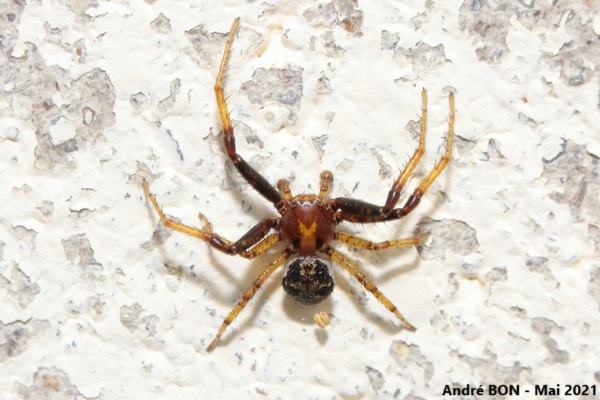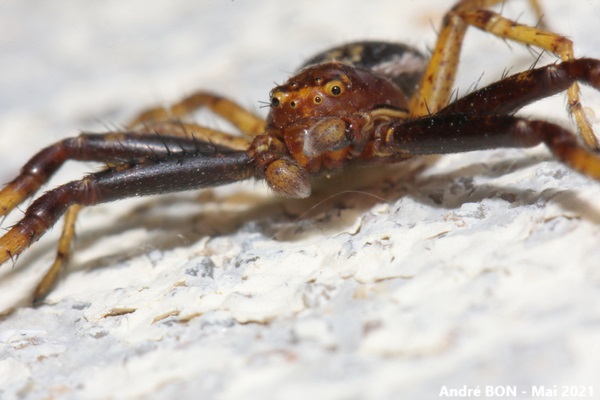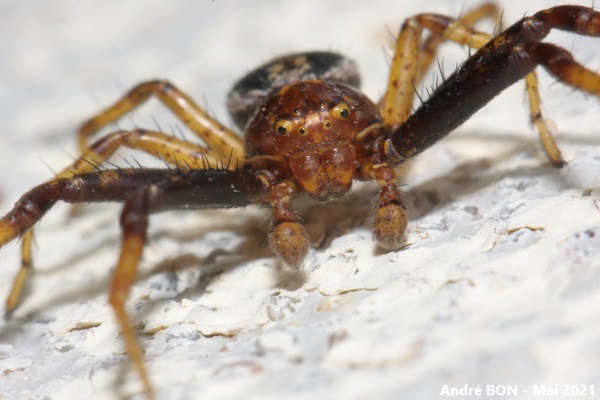


| Xysticus lanio (C. L. Koch, 1835) |



|
|
Scientific name: Xysticus lanio (C. L. Koch, 1835) Common name: French name: Order: Araneae Family: Thomisidae Size: Females: 6.1 to 8 mm; males: 4.2 to 6.2 mm. Biotope: Bushes, shrubs and wooded areas mainly on young trees. Web: No web. The spiders of the Xysticus genus are used to hunting by sitting in wait on the low growing vegetation. Observation period: Mainly from April to June. Geographic area: Europe, Russia east to Siberia, Turkey. |
The spiders of the Xysticus genus are small-sized crab spiders characterized by two well developed fore leg pairs, a cephalothorax slightly smaller than the abdomen and often showing a pale median band. The edges of the cephalothorax show a dark line above a pale line. The abdomen is generally flattened. It is enlarged at the rear and often shows a dark leaf-shaped or pagoda-shaped median pattern. The four median eyes form a trapeze. It is square-shaped or wider than high on the spiders of the Xysticus genus, meaning that the median eyes are not laterally very close. The spiders of the Ozyptila genus, which are a smaller size and generally observed on the ground, are very similar to those of the Xysticus genus. However the median eyes are laterally closer to each other so that the trapeze shape is higher than wide. There are many similar species (about 360 worldwide, 71 in Europe) and it is very difficult to tell them apart without a microscopic exam of the genitalia. The male Xysticus lanio are quite characteristic. They have the first two pairs of legs that are black in colour from the hips to the top of the tibia. The hind legs are light coloured with small dark rings at the joints. The cephalic triangle is bordered by a yellow line which thickens towards the rear. The abdomen is black with small white markings. Females are light in colour. The 3 internal spines of femur 1 do not have a black spot at their base. Tibia 1 are ringed dark, light, dark, the three areas of equal length. The hind legs are finely ringed with dark rings at the joints like those of males. |
| [To know more about the Xysticus lanio] [Next picture] [Top] |

|
Here is a typical male. Now that I have documented myself I will try to find a female. |
| [To know more about the Xysticus lanio] [Next picture] [Previous picture] [Top] |

|
Front view. |
| [To know more about the Xysticus lanio] [Previous picture] [Top] |

|
Another front view. |